|
Books Should Be Free Loyal Books Free Public Domain Audiobooks & eBook Downloads |
|
|
Books Should Be Free Loyal Books Free Public Domain Audiobooks & eBook Downloads |
|
War Stories |
|---|
|
Book type:
Sort by:
View by:
|
By: Erskine Childers (1870-1922) | |
|---|---|
 The Riddle of the Sands
The Riddle of the Sands
Containing many realistic details based on Childers’ own sailing trips along the German North Sea coast, the book is the retelling of a yachting expedition in the early 20th century combined with an adventurous spy story. It was one of the early invasion novels which predicted war with Germany and called for British preparedness. The plot involves the uncovering of secret German preparations for an invasion of the United Kingdom. It is often called the first modern spy novel, although others are as well, it was certainly very influential in the genre and for its time... | |
By: Eva March Tappan (1854-1930) | |
|---|---|
 World’s Story Volume XIII: The United States
World’s Story Volume XIII: The United States
This is the thirteenth volume of the 15-volume series of The World’s Story: a history of the World in story, song and art, edited by Eva March Tappan. Each book is a compilation of selections from prose literature, poetry and pictures and offers a comprehensive presentation of the world's history, art and culture, from the early times till the beginning of the 20th century. Part XIII is the second volume of the history of the United States, exploring topics from the Civil War, the settlement on the West Coast, and new scientific discoveries from the 19th and early 20th centuries. - Summary by Sonia | |
 World’s Story Volume IV: Greece and Rome
World’s Story Volume IV: Greece and Rome
This is the fourth volume of the 15-volume series of The World’s Story: a history of the World in story, song and art, edited by Eva March Tappan. Each book is a compilation of selections from prose literature, poetry and pictures and offers a comprehensive presentation of the world's history, art and culture, from the early times till the beginning of the 20th century. Topics in Part IV include Greek mythology, the classical Greek period and the Rise and Fall of the Roman Empire. - Summary by Sonia Cast list for The sacrifice of Iphigenia: Iphigenia: Devorah Allen / Chorus: alanmapstone / Messenger: Foon / Clytemnestra: Monika M... | |
 World’s Story Volume XII: The United States
World’s Story Volume XII: The United States
This is the twelfth volume of the 15-volume series of The World’s Story: a history of the World in story, song and art, edited by Eva March Tappan. Each book is a compilation of selections from prose literature, poetry and pictures and offers a comprehensive presentation of the world's history, art and culture, from the early times till the beginning of the 20th century. Part XII compiles stories about the early history of the United States, starting with the first explorators, the fights with the native Americans, the early settlers and culminating with the struggle for independence from the European leaders. - Summary by Sonia | |
 World’s Story Volume X: England, Scotland, Ireland and Wales
World’s Story Volume X: England, Scotland, Ireland and Wales
This is the tenth volume of the 15-volume series of The World’s Story: a history of the World in story, song and art, edited by Eva March Tappan. Each book is a compilation of selections from prose literature, poetry and pictures and offers a comprehensive presentation of the world's history, art and culture, from the early times till the beginning of the 20th century. Part X covers the second part of the history of England, from the Stuart Kings till the early 1900s. Also included are excerpts from the history of Ireland, Scotland and Wales, as well as Irish and Welsh legends and Scottish ballads... | |
 World’s Story Volume IX: England
World’s Story Volume IX: England
This is the ninth volume of the 15-volume series of The World’s Story: a history of the World in story, song and art, edited by Eva March Tappan. Each book is a compilation of selections from prose literature, poetry and pictures and offers a comprehensive presentation of the world's history, art and culture, from the early times till the beginning of the 20th century. Part IX deals with the first part of the history of England, from the early times till the reign of the Tudor kings and queens... | |
 World’s Story Volume VII: Germany, the Netherlands and Switzerland
World’s Story Volume VII: Germany, the Netherlands and Switzerland
This is the seventh volume of the 15-volume series of The World’s Story: a history of the World in story, song and art, edited by Eva March Tappan. Each book is a compilation of selections from prose literature, poetry and pictures and offers a comprehensive presentation of the world's history, art and culture, from the early times till the beginning of the 20th century. Topics in Part VII include the stories from the Nibelungen saga of the Germans, masterpieces of the Dutch Painters and the famous apple-shooting episode from Schiller's drama William Tell... | |
 World’s Story Volume V: Italy, France, Spain and Portugal
World’s Story Volume V: Italy, France, Spain and Portugal
This is the fifth volume of the 15-volume series of The World’s Story: a history of the World in story, song and art, edited by Eva March Tappan. Each book is a compilation of selections from prose literature, poetry and pictures and offers a comprehensive presentation of the world's history, art and culture, from the early times till the beginning of the 20th century. Topics in Part V include Italian painters and poets, the French Revolution, the Spanish Inquisition and Portuguese explorers. - Summary by Sonia Cast list for A supposed street scene in Verona in the fourteenth century: Gregory: Nemo / Sampson: Tomas Peter / Abraham: Monika M... | |
 World’s Story Volume VI: Russia, Austria-Hungary, the Balkan States and Turkey
World’s Story Volume VI: Russia, Austria-Hungary, the Balkan States and Turkey
This is the sixth volume of the 15-volume series of The World’s Story: a history of the World in story, song and art, edited by Eva March Tappan. Each book is a compilation of selections from prose literature, poetry and pictures and offers a comprehensive presentation of the world's history, art and culture, from the early times till the beginning of the 20th century. Topics in Part VI include the Russian Empire, the fights for independence in Hungary and the Balkan states and the politics of early Turkey... | |
By: Evans, A. J. (1889-1960) | |
|---|---|
 The Escaping Club
The Escaping Club
Described by some as one of the greatest escape books published. The Escaping Club recounts Evans' escape to Switzerland from a supposedly "escape-proof" German prison camp during World War I. After repatriation and rejoining the war, Evans again finds himself captured, this time first by Arabs and then by Turks. He again manages to escape. A detailed look at the trials faced by Allied POWs during World War I. | |
By: Everett T. Tomlinson (1859-1931) | |
|---|---|
 Young Folks' History of the American Revolution
Young Folks' History of the American Revolution
This work has grown out of the desire frequently expressed to the writer when he has been lecturing on the American Revolution, that in some way the experiences of the people as well as the deeds of the armies in that trying period might be presented to the present generation. The author has given to the public this narrative, in which the course of the armies in the various campaigns is followed and, at the same time, many of the forgotten or ignored experiences and deeds of the common people are also incorporated. | |
By: F. Scott Fitzgerald (1896-1940) | |
|---|---|
 This Side of Paradise
This Side of Paradise
A romantic and witty novel that has weathered time to remain one of America’s classic pieces. In the shadows of the great Gatsby is another brilliant novel by F. Scott Fitzgerald. This book is evidence to Fitzgerald’s literal genius because it was written by the author in his twenties to mirror his experiences at the time. It paints a picture of what it was like to be a young man or woman in the 20th century and in the wake of the First World War. The book is set on a foundation of socialist principles... | |
By: F. Tennyson Jesse (1888-1958) | |
|---|---|
 Sword of Deborah
Sword of Deborah
"The Sword of Deborah" contains the reflections of a woman journalist visiting women working behind the lines in France during World War I. She writes: "I was glad to have seen all the different convoys I had, because no two had been to me alike, and to each I am indebted for a differing expression of the same vision, which is the vision splendid of a duty undertaken gladly and sustained with courage. From my first convoys -- the Fannies and the G.S.V.A.D.'s -- I got the wonderful facts of it, at the V... | |
By: Fa'iz El-Ghusein (1883-1968) | |
|---|---|
 Martyred Armenia
Martyred Armenia
This is a first hand account of the Armenian Genocide written by a Syrian who had been a Turkish official for three and a half years. His accounts tell of the worst of humanity, and also of the noblest. The noble include families who courageously support each other in the face of death, and Turks who refuse to follow orders to kill, knowing that they shall be executed themselves for their defiance. | |
By: Flora Sandes (1876-1956) | |
|---|---|
 English Woman-Sergeant in the Serbian Army
English Woman-Sergeant in the Serbian Army
Flora Sandes was the only British woman officially to serve as a soldier in World War I. Initially a St. John Ambulance volunteer, she traveled to Serbia, where, in the confusion of war, she was formally enrolled in the Serbian army. While the Serbian Army was regrouping in Corfu, Ms. Sandes returned to England to recuperate and publish these memoirs. | |
By: Florence Roma Muir Wilson (1891-1930) | |
|---|---|
 If All These Young Men
If All These Young Men
Another remarkable World War I novel by Romer Wilson, "If All These Young Men" is a character study of a group of young 20-something friends in England dealing with the looming, grey presence of the War in their lives. The story begins on Good Friday 1918, and centers on Josephine Miller, a restless, strong-minded young woman who cannot tolerate trivialities or frivolities so long as the War goes on, and who agonizes over how to go on living in its shadow. The characters of Josephine and her friends... | |
By: Ford Madox Ford (1873-1939) | |
|---|---|
 The Fifth Queen
The Fifth Queen
The Fifth Queen trilogy is a series of connected historical novels by English novelist Ford Madox Ford. It consists of three novels, The Fifth Queen; And How She Came to Court (1906), Privy Seal (1907) and The Fifth Queen Crowned (1908), which present a highly fictionalized account of Katharine Howard's marriage to King Henry VIII. | |
 No More Parades
No More Parades
When No More Parades was first published in 1925, a critic in The Observer wrote of the first 100 pages that they "easily surpass in truth, brilliance and subtlety everything else that has yet been written in England about the physical circumstances and moral atmosphere of the war". The second novel in the Parade's End tetralogy, No More Parades places army captain Christopher Tietjens, his beautiful but cruel wife Sylvia, and Tietjens' jealous and tempestuous godfather and commanding officer General... | |
By: Frances Hodgson Burnett (1849-1924) | |
|---|---|
 Robin
Robin
Starting with a summary of the 1922 novel The Head of the House of Coombe, which followed the relationships between a group of pre-WWI English nobles and commoners, this sequel, called Robin, completes the story of Robin, Lord Coombe, Donal and Feather. (Introduction by Linda Andrus) | |
By: Frances M. A. Roe | |
|---|---|
 Army Letters from an Officer's Wife, 1871-1888
Army Letters from an Officer's Wife, 1871-1888
"There appeared from the bushes in front of me, and right in the path, two immense gray wolves . . . Rollo saw them and stopped instantly, giving deep sighs, preparing to snort, I knew . . . To give myself courage, I talked to the horse, slowly turning him around . . . when out of the bushes in front of us, there came a third wolf! The situation was not pleasant and without stopping to think, I said ‘Rollo, we must run him down - now do your best’ and taking a firm hold of the bridle, and bracing myself in the saddle, I struck the horse with my whip and gave an awful scream... | |
By: Frances Swain | |
|---|---|
 Food Guide for War Service at Home
Food Guide for War Service at Home
"The long war has brought hunger to Europe; some of her peoples stand constantly face to face with starvation. To meet all this great food need in Europe—and meeting it is an imperative military necessity—we must be very careful and economical in our food use here at home. We must eat less; we must waste nothing; we must equalize the distribution of what food we may retain for ourselves; we must prevent extortion and profiteering which make prices so high that the poor cannot buy the food they actually need; and we must try to produce more food... | |
By: Francis Andrew March (1863-1926) | |
|---|---|
 History of the World War
History of the World War
This is a popular narrative history of the world's greatest war. Written frankly from the viewpoint of the United States and the Allies, it visualizes the bloodiest and most destructive conflict of all the ages from its remote causes to its glorious conclusion and beneficent results.Two ideals have been before us in the preparation of this necessary work. These are simplicity and thoroughness. It is of no avail to describe the greatest of human events if the description is so confused that the reader loses interest... | |
By: Francis Key Howard (1826-1872) | |
|---|---|
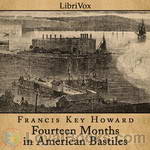 Fourteen Months in American Bastiles
Fourteen Months in American Bastiles
Francis Key Howard recounts in this book his life as a political prisoner of the United States. He points out that he was held captive at the same location where his grandfather was inspired to write the national anthem about the "land of the free," which makes a very stunning contrast. The sufferings that were imposed on him by the Union forces had the effect of solidifying his determination to resist unjust governmental dictates. (Introduction by Katie Riley) | |
By: Frank Gelett Burgess (1886-1951) | |
|---|---|
 War the Creator
War the Creator
Gelett Burgess, an American writer, penned this gripping account of the profound change that war caused in a young Frenchman he knew. “Because he was my friend, because he was so lovable, because he suffered much, I want to try to tell the story of a boy who, in two months, became a man. I happened to see him first just before the war began, and not again until after he had been wounded; and the change in him was then so great that I could not rest until I had learned how it had been brought about.” – From War the Creator | |
By: Frank Mundell (1870-1932) | |
|---|---|
 Stories of the Victoria Cross
Stories of the Victoria Cross
The Victoria Cross is the highest military award that can be made to members of the British and Commonwealth armed forces for acts of gallantry and valour “in the face of the enemy”. The medal was instituted by Royal Warrant in 1856 by Queen Victoria, who had taken an active interest in the reports and despatches during the battles of the Crimean War; especially the details describing the exceptional bravery and gallantry of individual soldiers of all ranks whilst under intense conflict. This book, Stories of the Victoria Cross was one in a series of inspirational texts and ‘heroic writings’ by the Victorian author Frank Mundell and published by The Sunday School Union... | |
By: Frederick A. Talbot (1880-?) | |
|---|---|
 Aeroplanes and Dirigibles of War
Aeroplanes and Dirigibles of War
"Aeroplanes and Dirigibles of War" is an interesting read of the beginnings of air warfare in World War I. Anyone interested in early aviation and armament will find this a fascinating work. By William Tomcho. | |
By: Frederick Herman Tilberg (1895-1979) | |
|---|---|
 Gettysburg National Military Park, Pennsylvania
Gettysburg National Military Park, Pennsylvania
On the gently rolling farm lands surrounding the little town of Gettysburg, Pa., was fought one of the great decisive battles of American history. For 3 days, from July 1 to 3, 1863, a gigantic struggle between 75,000 Confederates and 88,000 Union troops raged about the town and left 51,000 casualties in its wake. Heroic deeds were numerous on both sides, climaxed by the famed Confederate assault on July 3 which has become known throughout the world as Pickett’s Charge. The Union victory gained on these fields ended the last Confederate invasion of the North and marked the beginning of a gradual decline in Southern military power... | |
 Antietam National Battlefield, Maryland
Antietam National Battlefield, Maryland
The American Civil War battle at Antietam, Maryland, on 17 September 1862, has been called the bloodiest day of that conflict. Confederate General Lee’s invasion of the North was repulsed, and when the fighting ended, the course of the Civil War had been greatly altered. This victory by the North moved President Abraham Lincoln to issue The Emancipation Proclamation, freeing all slaves in states then in rebellion against the Union. This 1960 publication is number 31 in the Historical Handbook series put out by the U... | |
By: Frederick Marryat (1792-1848) | |
|---|---|
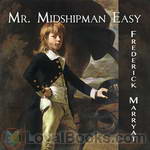 Mr. Midshipman Easy
Mr. Midshipman Easy
One of the first novel-length pieces of nautical fiction, MR. MIDSHIPMAN EASY (1836) is a funny and easygoing account of the adventures of Jack Easy, a son of privilege who joins the Royal Navy. The work begins as a satire on Jack’s attachment to “the rights of man” that may try the listener’s patience. But despair not, for the story soon settles down as the philosophical midshipman begins his many triumphs over bullies, foul weather, and various damned foreigners of murderous intent.Caveat audiens: This novel employs racial/ethnic epithets and religious stereotypes, as well as taking a rather sunny view of supply-side economics... | |
 Naval Officer, or Scenes in the Life and Adventures of Frank Mildmay
Naval Officer, or Scenes in the Life and Adventures of Frank Mildmay
Marryat was a midshipman under Captain Cochrane and this, his first naval adventure, is considered to be a highly autobiographical telling of his adventures with one of Britain's most famous and daring naval captains. | |
By: Frederick Thomas Jane (1865-1916) | |
|---|---|
 Blake of the "Rattlesnake"
Blake of the "Rattlesnake"
Fred Jane, who later went on to publish his famous "Jane's Fighting Ships", doubtless was noting the success of other books that forecast a British defeat in the event of war in the late 19th century when he wrote this fictional account of "The Man Who Saved England." Jane tells of a possible war against both France and Russia with plenty of verve and derring-do amid naval battles, both small and large. - Summary by Mark | |
By: Friedrich Schiller | |
|---|---|
 The Thirty Years War
The Thirty Years War
The History of the Thirty Years War is a five volume work, which followed his very successful History of the Revolt of the Netherlands. Written for a wider audience than Revolt, it is a vivid history, colored by Schiller’s own interest in the question of human freedom and his rationalist optimism. Volume 1 covers the background of the war, through the Battle of Prague in late 1620. (Introduction by Alan Winterrowd) | |
By: Fritz Kreisler | |
|---|---|
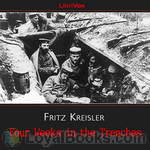 Four Weeks in the Trenches
Four Weeks in the Trenches
A brief record of the fighting on the Eastern front in the great war by a participant in that great and terrible conflict | |
By: Fritz Leiber (1910-1992) | |
|---|---|
 The Big Time
The Big Time
A classic locked room mystery, in a not-so-classic setting. (Intro by Karen Savage) | |
By: Gaius Julius Caesar | |
|---|---|
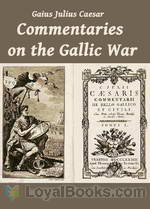 Commentaries on the Gallic War
Commentaries on the Gallic War
Commentarii de Bello Gallico (English: Commentaries on the Gallic War) is Julius Caesar's firsthand account of the Gallic Wars, written as a third-person narrative. In it Caesar describes the battles and intrigues that took place in the nine years he spent fighting local armies in Gaul that opposed Roman domination.The work has been a mainstay in the teaching of Latin to schoolchildren, its simple, direct prose lending itself to that purpose. It begins with the frequently quoted phrase "Gallia est omnis divisa in partes tres", sometimes quoted as "Omnia Gallia in tres partes divisa est", meaning "All Gaul is divided into three parts". | |
By: General Sir John Miller Adye (1819-1900) | |
|---|---|
 Indian Frontier Policy, an Historical Sketch
Indian Frontier Policy, an Historical Sketch
“The subject of our policy on the North-West frontier of India is one of great importance, as affecting the general welfare of our Eastern Empire, and is specially interesting at the present time, when military operations on a considerable scale are being conducted against a combination of the independent tribes along the frontier. It must be understood that the present condition of affairs is no mere sudden outbreak on the part of our turbulent neighbours. Its causes lie far deeper, and are the consequences of events in bygone years”. (From the author’s Preface, 1897). | |
By: Geoffrey H. Malins (1887-1943) | |
|---|---|
 How I Filmed the War
How I Filmed the War
An account of World War I and the experience of filming it by an early cinematographer (and, after the war, successful director) who was there. | |
By: George Alfred Henty (1832-1902) | |
|---|---|
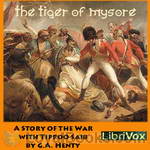 The Tiger of Mysore
The Tiger of Mysore
During the Indian war with Tippoo Saib, 15 year old Dick Holland and his mother set out from England to find and rescue his father, shipwrecked 6 years earlier, and believed to be held prisoner by the 'Tiger of Mysore'. | |
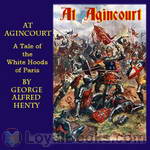 At Agincourt - White Hoods of Paris
At Agincourt - White Hoods of Paris
The story begins in a grim feudal castle in Normandie. The times were troublous, and soon the king compelled Lady Margaret de Villeroy, with her children, to go to Paris as hostages. Guy Aylmer went with her.Paris was turbulent. Soon the guild of the butchers, adopting white hoods as their uniform, seized the city, and besieged the house where our hero and his charges lived. After desperate fighting, the white hoods were beaten and our hero and his charges escaped from the city, and from France. (Summary from the original back cover) | |
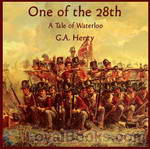 One Of The 28th - a Tale of Waterloo
One Of The 28th - a Tale of Waterloo
A tale of Victorian-style romance, maritime battles and even the penultimate Napoleanic battle - Waterloo. (Introduction by Mike Harris) | |
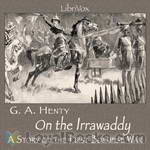 On the Irrawaddy, A Story of the First Burmese War(1897)
On the Irrawaddy, A Story of the First Burmese War(1897)
With the exception of the terrible retreat from Afghanistan, none of England's many little wars have been so fatal--in proportion to the number of those engaged--as our first expedition to Burma. It was undertaken without any due comprehension of the difficulties to be encountered, from the effects of climate and the deficiency of transport; the power, and still more the obstinacy and arrogance of the court of Ava were altogether underrated; and it was considered that our possession of her ports would assuredly bring the enemy, who had wantonly forced the struggle upon us, to submission... | |
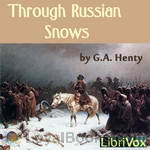 Through Russian Snows
Through Russian Snows
There are few campaigns that, either in point of the immense scale upon which it was undertaken, the completeness of its failure, or the enormous loss of life entailed, appeal to the imagination in so great a degree as that of Napoleon against Russia. Fortunately, we have in the narratives of Sir Robert Wilson, British commissioner with the Russian army, and of Count Segur, who was upon Napoleon's staff, minute descriptions of the events as seen by eye-witnesses, and besides these the campaign has been treated fully by various military writers... | |
 With Frederick The Great: A Story of the Seven Years' War
With Frederick The Great: A Story of the Seven Years' War
Among the great wars of history there are few, if any, instances of so long and successfully sustained a struggle, against enormous odds, as that of the Seven Years' War, maintained by Prussia--then a small and comparatively insignificant kingdom--against Russia, Austria, and France simultaneously, who were aided also by the forces of most of the minor principalities of Germany. The population of Prussia was not more than five millions, while that of the Allies considerably exceeded a hundred millions... | |
 Young Carthaginian
Young Carthaginian
Typically, Henty's heroes are boys of pluck in troubled times, and this is no different. Detailed research is embellished with a vivid imagination, especially in this novel set in the Punic wars, about which knowledge is limited: "...certainly we had but a hazy idea as to the merits of the struggle and knew but little of its events, for the Latin and Greek authors, which serve as the ordinary textbooks in schools, do not treat of the Punic wars. That it was a struggle for empire at first, and latterly... | |
 With Lee in Virginia
With Lee in Virginia
Vincent Wingfield is the son of a wealthy Virginian planter. When the country goes to war, he enlists in the cavalry, and sees action under the various generals commanding the army in and near Virginia. He has several private adventures as well, including a personal enemy, prison escape, rescue of a young lady, spying expedition, and recovery of a stolen slave. He rises in rank in the Confederate army, and after the war is over, he marries and returns home to manage his mother's plantation. Henty in this book gives an overview of the causes of the Civil War, and follows the battles and movements of the army in Virginia and the surrounding area... | |
 At the Point of the Bayonet: A Tale of the Mahratta War
At the Point of the Bayonet: A Tale of the Mahratta War
The story of the war in which the power of the great Mahratta confederacy was broken ended in the firm establishment of the British Empire the Indian Peninsula. When the struggle began, the Mahrattas were masters of no small portion of India; their territory comprising the whole country between Bombay and Delhi, and stretching down from Rajputana to Allahabad; while in the south they were lords of the district of Cuttack, thereby separating Madras from Calcutta. The jealousies of the great Mahratta... | |
 Bonnie Prince Charlie: a Tale of Fontenoy and Culloden
Bonnie Prince Charlie: a Tale of Fontenoy and Culloden
This is a tale of the son of a Scottish officer, who gets arrested for helping a Jacobite agent. Set during the Jacobite rebellion in Scotland in 1755, the boy escapes and makes it to France and shares some adventures with Prince Charlie. | |
By: George Barton (1866-1940) | |
|---|---|
 Angels of the Battlefield
Angels of the Battlefield
"Angels of the Battlefield: A History of the Labors of the Catholic Sisterhoods in the Late Civil War" chronicles the compassionate services of these dedicated women during the bitter and bloody U.S. Civil War. These accounts also offer some important historical details, giving some important insights into the people and events of the war. This is the Second Edition, Revised and Enlarged. - Summary by Larry Wilson | |
By: George Bethune English (1787-1828) | |
|---|---|
 A Narrative of the Expedition to Dongola and Sennaar
A Narrative of the Expedition to Dongola and Sennaar
As a second lieutenant in the United States Marine Corps during the War of 1812 assigned to Marine Corps headquarters, English sailed to the Mediterranean, and was among the first citizens of the United States known to have visited Egypt. Shortly after arriving in Egypt he resigned his commission, converted to Islam and joined Isma'il Pasha in an expedition up the Nile River against Sennar in 1820, winning distinction as an officer of artillery. He published his Narrative of the Expedition to Dongola and Sennaar (London 1822) regarding his exploits. (Introduction adapted by obform from Wikipedia) | |
By: George Brinton McClellan (1826-1885) | |
|---|---|
 McClellan's Own Story
McClellan's Own Story
Memoirs of General George Brinton McClellan, commanding general of the Army of the Potomac during the early years of the American Civil War. The work covers the time that McClellan commanded the Army of the Potomac, including the Peninsula Campaign, the Seven Days' Battles, and the Battle of Antietam. | |
By: George Cooreman (1852-1926) | |
|---|---|
 Martyrdom Of Belgium; Official Report Of Massacres Of Peaceable Citizens, Women And Children By The German Army; Testimony Of Eye-Witnesses
Martyrdom Of Belgium; Official Report Of Massacres Of Peaceable Citizens, Women And Children By The German Army; Testimony Of Eye-Witnesses
The title says it all. World War I narratives of German activities in Belgium after the German invasion of this neutral country. - Summary by david wales | |
By: George Eggleston (1839-1911) | |
|---|---|
 Rebel's Recollections
Rebel's Recollections
George Cary Eggleston's Civil War memoir begins with a separate essay on the living conditions and political opinions of Virginia’s citizenry before secession. The body of the work contains vivid descriptions and accounts of the men and women of the South during the time of the Confederacy. Eggleston praises its war heroes, Robert E. Lee, Stonewall Jackson, and Jeb Stuart, but is highly critical of Jefferson Davis and of his government’s inefficiencies, red-tape, and favoritism. The book concludes with the war's end and a tribute to the character of the newly freed slaves... | |
By: George Gibbs (1870-1942) | |
|---|---|
 Golden Bough
Golden Bough
The eyes of the Légionnaire, now grown accustomed to the glow of the light, made sure that the figure had not moved, nor was aware of his silent and furtive approach. Two plans of action suggested themselves, one to move behind the foliage to the right and intercept the monk with the lantern should he attempt to flee toward the lights of the house nearby, the other to risk all in a frank statement, a plea for charity and asylum. (A selection from Chapter 1. ) | |
By: George Griffith (1857-1906) | |
|---|---|
 Angel of the Revolution
Angel of the Revolution
The Angel of the Revolution: A Tale of the Coming Terror (1893) is a science fiction novel by English writer George Griffith. It was his first published novel and remains his most famous work. It was first published in Pearson's Weekly and was prompted by the success of The Great War of 1892 in Black and White magazine, which was itself inspired by The Battle of Dorking. A lurid mix of Jules Verne's futuristic air warfare fantasies, the utopian visions of News from Nowhere and the future war invasion literature of Chesney and his imitators, it tells the tale of a group of terrorists who conquer the world through airship warfare... | |
By: George Manington | |
|---|---|
 Soldier Of The Legion;
Soldier Of The Legion; An Englishman's Adventures Under The French Flag in Algeria And Tonquin An educated gentleman, Mr Manington has given an insight into the unusual experiences of an Englishman in the French Foreign Legion, such as no ordinary "mercenary" could have done. Most of the narrative deals with Tonquin, and the fighting there against the rebels in their forest fastnesses. Incidentally, in giving an account of his friendship for the native sergeant, Doy-Tho, the author has been able to impart to the pages of the book an Oriental atmosphere that we think will prove attractive to the reader. - Summary by Editors' Note | |
By: George Pearson | |
|---|---|
 The Escape of a Princess Pat
The Escape of a Princess Pat
Being the full account of the capture and fifteen months’ imprisonment of Corporal Edwards, of the Princess Patricia’s Canadian Light Infantry, and his final escape from Germany into Holland. | |
By: George William Cox (1827-1902) | |
|---|---|
 Crusades
Crusades
The Crusades were a series of religious wars fought between 1096 and 1272 to recover the Holy Land from Islamic rule. According to the Latin Church, Crusaders were penitent pilgrims whose sins were forgiven. British historian, George Cox, writes of the churchmen, great and small, who inspired the Crusades, of the warriors who left families and lands behind, of the wily Venetian merchants and Byzantine emperors who exploited the knights, and of the valor of the Saracens. Here are accounts of sublime sacrifice and bestial ferocity, of dynastic conflict within the Crusader States, of sieges, starvation, pestilence, and ambush, and of the clash and interpenetration of two cultures... | |
By: George-Günther Freiherr von Forstner (1882-1940) | |
|---|---|
 The Journal of Submarine Commander Von Forstner
The Journal of Submarine Commander Von Forstner
The Journal of Submarine Commander Von Forstner is a graphic account of WWI submarine warfare. Forstner was the commander of German U-boat U-28. His journal, first published 1916, gives a gritty picture of daily life inside a submarine and details several torpedo attacks on Allied shipping. The 1917 translation of Forstner’s journal into English was unquestionably intended to bolster the Allied war effort. In the foreword, the translator states: “Nothing at the present day has aroused such fear as this invisible enemy, nor has anything outraged the civilized world like the tragedies caused by the German submarines... | |
By: Giles Lytton Strachey (1880-1932) | |
|---|---|
 Eminent Victorians
Eminent Victorians
On Modern Library's list of 100 Best Non-Fiction books, "Eminent Victorians" marked an epoch in the art of biography; it also helped to crack the old myths of high Victorianism and to usher in a new spirit by which chauvinism, hypocrisy and the stiff upper lip were debunked. In it, Strachey cleverly exposes the self-seeking ambitions of Cardinal Manning and the manipulative, neurotic Florence Nightingale; and in his essays on Dr Arnold and General Gordon, his quarries are not only his subjects but also the public-school system and the whole structure of nineteenth-century liberal values. | |
By: Grace Ellery Channing (1862-1937) | |
|---|---|
 Any Woman To A Soldier
Any Woman To A Soldier
volunteers bring you 14 recordings of Any Woman To A Soldier by Grace Ellery Channing. This was the Weekly Poetry project for November 4, 2018. Grace Ellery Channing was a writer and poet who published often in The Land of Sunshine. Channing began her career as a writer by editing her grandfather's memoirs, Dr. Channing's Notebook . She became an associate editor of The Land of Sunshine , and in her tenure as a writer and poet contributor to the publication, advocated for an increased reliance on Mediterranean practices for Los Angelenos. This included embracing the sun instead of avoiding it, eating lighter food, and taking in wine and afternoon naps. - Summary by Wikipedia | |
By: Grover Cleveland (1837-1908) | |
|---|---|
 State of the Union Addresses by United States Presidents (1893 - 1896)
State of the Union Addresses by United States Presidents (1893 - 1896)
The State of the Union address is a speech presented by the President of the United States to a joint session of the United States Congress, typically delivered annually. The address not only reports on the condition of the nation but also allows the President to outline his legislative agenda and national priorities. This album contains recordings of addresses from Grover Cleveland's second term. - Summary by Wikipedia | |
By: Guy Thornton (1872-1934) | |
|---|---|
 With the Anzacs in Cairo
With the Anzacs in Cairo
Guy Thornton recounts his experiences serving as a military chaplain with the Australian and New Zealand Army Corps while stationed in Egypt during World War I. His writing is opinionated, emotionally vulnerable, and written in very colorful, vivid prose. He recounts both his successes and failures as a pastor. Of particular concern to Thornton, are his soldiers’ interactions with the Wasa'a- the red-light district of Cairo which was popular with the soldiers who often patronized prostitutes. Thornton also expresses his experiences exploring Cairo, his work as a chaplain, and the various social services catering to soldiers. - Summary by Adam Bielka | |
By: H. Beam Piper (1904-1964) | |
|---|---|
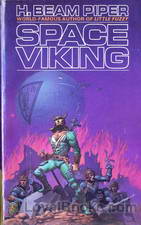 Space Viking
Space Viking
A galactic war has left the Terran Federation in ruins. Formerly civilized planets have decivilized into barbarism. Space Vikings roam the wreckage, plundering and killing for gain. Lord Lucas Trask of Traskon was no admirer of the Space Vikings, but when murder takes his wife on his wedding day, Trask trades everything he has for his own Space Viking ship and sets out on a galaxy-wide quest for revenge. | |
 Null-ABC
Null-ABC
"There's some reaction these days that holds scientists responsible for war. Take it one step further: What happens if "book-learnin'" is held responsible ...?" | |
By: H. G. Wells (1866-1946) | |
|---|---|
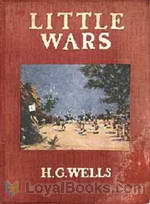 Little Wars (A Game for Boys)
Little Wars (A Game for Boys)
Miniature wargaming got its start with the publication in 1913 of this thoroughly entertaining little account of how H.G. Wells, with certain of his friends, took their childhood toys and turned play into acceptable middle-aged sport by subjecting the exercise to the civilizing influence of actual rules. While wargaming progressed far past these beginnings, Wells observes how “little wars” with even his elementary rules can suggest the wholesale crudity of the real thing. “You have only to play at Little Wars three or four times to realise just what a blundering thing Great War must be... | |
 The War in the Air
The War in the Air
War in the Air was written during a prolific time in H. G. Wells's writing career. Having withdrawn from British politics to spend more time on his own ideas, he published twelve books between 1901 and 1911, including this one. while many British citizens were surprised by the advent of World War I, Wells had already written prophetically about such a conflict. War in the Air predicted use of airplanes in modern war. | |
 Mr. Britling Sees It Through
Mr. Britling Sees It Through
"Mr. Britling Sees It Through" is H. G. Wells' attempt to make sense of World War I. It begins with a lighthearted account of an American visiting England for the first time, but the outbreak of war changes everything. Day by day and month by month, Wells chronicles the unfolding events and public reaction as witnessed by the inhabitants of one house in rural Essex. Each of the characters tries in a different way to keep their bearings in a world suddenly changed beyond recognition. This book was published in 1916 while the war was still in progress, so no clear resolution was possible... | |
By: Harold Ashton (1875-1919) | |
|---|---|
 Private Pinkerton Millionaire
Private Pinkerton Millionaire
The sketches and stories in this little volume must be read as fiction. But they are all, or nearly all, founded on fact, and built up from scenes and incidents I myself either witnessed or heard, first-hand, during my sojourn in France and Flanders as Special Correspondent for a London morning newspaper. Private Pinkerton I met in the flesh several times—a gallant young English gentleman, if there ever was one, a cool and clever fighter, a dead shot, but shy as a schoolgirl when it came to the telling of his own adventures. I have rarely met a millionaire so engaging, so kindly, so well loved by 'the boys', but so courageous withal. | |
 First From the Front
First From the Front
In this brief book I have lifted a very small corner of the curtain of war, to tell of my adventures — a week in the North Sea, and a breathless score of days in Northern France. I have touched upon both Tragedy and Comedy as they came my way. The tragedy is terrible enough - I have put it down plainly and unvarnished. From Tragedy to Comedy, it is but a step, along the gloomiest corridor of life one sees the flash of the cap and hears the rattle of the bells. Otherwise, it would be unbearable... | |
By: Harry Zody | |
|---|---|
 Over Here and Over There
Over Here and Over There
In publishing this book I have no intention whatsoever to offer a work of great literary value. As such it would undoubtedly be a failure, because, being of a non-English-speaking race, and only having been in this country a comparatively short time before going over to France, I cannot claim a mastery of the English language. It has merely been my intention to express the spirit which led me to America and thence with Pershing's Expeditionary Forces to France. | |
By: Henry Beston (1888-1968) | |
|---|---|
 Full Speed Ahead: Tales From The Log Of A Correspondent
Full Speed Ahead: Tales From The Log Of A Correspondent
“These tales are memories of several months spent as a special correspondent attached to the forces of the American Navy on foreign service…. [I have] been content to chronicle the interesting incidents of the daily life as well as the achievements and heroisms of the friends who keep the highways of the sea…. I would not end without a word of thanks to the enlisted men for their unfailing good will and ever courteous behaviour.” Henry Beston was an American author. In 1918, Beston became a press representative for the U... | |
By: Henry Cabot Lodge (1850-1924) | |
|---|---|
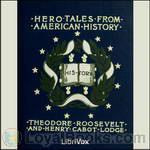 Hero Tales from American History
Hero Tales from American History
Its purpose … is to tell in simple fashion the story of some Americans who showed that they knew how to live and how to die; who proved their truth by their endeavor; and who joined to the stern and manly qualities which are essential to the well-being of a masterful race the virtues of gentleness, of patriotism, and of lofty adherence to an ideal. It is a good thing for all Americans … to remember the men who have given their lives in war and peace to the service of their fellow-countrymen, and to keep in mind the feats of daring and personal prowess done in time past by some of the many champions of the nation in the various crises of her history. | |
By: Henry Fox | |
|---|---|
 What the ''Boys'' Did Over There
What the ''Boys'' Did Over There
Personal accounts and recollections of soldiers coping with body lice, poisonous gas, rats, and death in the trenches during WWI. - Summary by Jeffery Smith | |
By: Henry I. Shaw, Jr. (1927-2000) | |
|---|---|
 First Offensive: The Marine Campaign for Guadalcanal
First Offensive: The Marine Campaign for Guadalcanal
In the early summer of 1942, intelligence reports of the construction of a Japanese airfield near Lunga Point on Guadalcanal in the Solomon Islands triggered a demand for offensive action in the South Pacific. Completion of the Guadalcanal airfield might signal the beginning of a renewed enemy advance to the south and an increased threat to the lifeline of American aid to New Zealand and Australia. On 23 July 1942, the Joint Chiefs of Staff in Washington agreed that the line of communications in the South Pacific had to be secured. The Japanese advance had to be stopped. Thus, Operation Watchtower, the seizure of Guadalcanal came into being. - Summary by Henry I Shaw | |
By: Henry Inman (1837-1899) | |
|---|---|
 Tales Of The Trail; Short Stories Of Western Life
Tales Of The Trail; Short Stories Of Western Life
This 1898 collection of thirteen previously published articles exhibits the acute perception of one of the most popular writers of the late 19th-early 20th centuries. “These "Tales of the Trail" are based upon actual facts which came under the personal observation of the author… and will form another interesting series of stories of that era of great adventures, when the country west of the Missouri was unknown except to the trappers, hunters, and army officers.” Henry Inman was an American soldier, frontiersman, and author... | |
By: Henry Ossian Flipper (1856-1940) | |
|---|---|
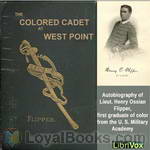 The Colored Cadet at West Point
The Colored Cadet at West Point
Henry Ossian Flipper--born into slavery in Thomasville, Georgia on March 21, 1856--did not learn to read and write until just before the end of the Civil War. Once the war had ended, Flipper attended several schools showing a great aptitude for knowledge. During his freshman year at Atlanta University he applied for admittance to the United States National Military Academy at West Point. He was appointed to the academy in 1873 along with a fellow African American, John W. Williams. Cadet Williams was later dismissed for academic deficiencies. | |
By: Henry Stanley Banks (1890-1969) | |
|---|---|
 War Surgery - From Firing Line to Base
War Surgery - From Firing Line to Base
One of the first volumes dedicated to systematized medical treatment of soldiers in modern warfare, including a chapter on specific care for airmen, by British doctors who served on the front lines of WWI. Graphic descriptions of war wounds are not for the weak of heart. - Summary by BellonaTimes | |
By: Herman Melville | |
|---|---|
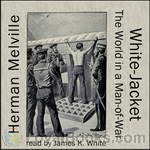 White Jacket, or The World in a Man-of-War
White Jacket, or The World in a Man-of-War
This is a tale based on Melville's experiences aboard the USS United States from 1843 to 1844. It comments on the harsh and brutal realities of service in the US Navy at that time, but beyond this the narrator has created for the reader graphic symbols for class distinction, segregation and slavery aboard this microcosm of the world, the USS Neversink. (Introduction by James K. White) | |
 Selections from Battle-Pieces and Aspects of the War
Selections from Battle-Pieces and Aspects of the War
Published in 1866, Battle-Pieces and Aspects of the War is a collection of poems about the Civil War by Herman Melville. Many of the poems are inspired by second- and third-hand accounts from print news sources (especially the Rebellion Record) and from family and friends. A handful of trips Melville took before, during, and after the war provide additional angles of vision into the battles, the personalities, and the moods of war. In an opening note, Melville describes his project not so much as a systematic chronicle (though many of the individual poems refer to specific events) but as a kind of memory piece of national experience... | |
By: Heywood Broun (1888-1939) | |
|---|---|
 A.E.F.: With General Pershing and the American Forces
A.E.F.: With General Pershing and the American Forces
In 1917, the American Expeditionary Forces (AEF) arrived in Europe to fight alongside the French and British allied forces. American journalist Heywood Broun followed the AEF and reported on their experiences. He published these sketches in book form in 1918. This project is part of the ongoing commemoration by Librivox volunteers of the centenary of World War I. | |
By: Hiram Bingham (1875-1956) | |
|---|---|
 Explorer in the Air Service
Explorer in the Air Service
Explorer Hiram Bingham discovered Machu Picchu in 1911, as recounted in his book Inca Lands, now released on Librivox at http://librivox.org/inca-lands-by-hiram-bingham/. In 1917, he became an aviator and organized the United States Schools of Military Aeronautics at eight universities to provide ground school training for aviation cadets, and then in Issoudun, France, Bingham commanded the primary Air Service flying school. He became a supporter of the Air Service in their post-war quest for independence from the Army and supported that effort, in part, with the publication of this book of his wartime experiences published in 1920 by Yale University Press. | |
By: Homer | |
|---|---|
 The Iliad
The Iliad
A divinely beautiful woman who becomes the cause of a terrible war in which the gods themselves take sides. Valor and villainy, sacrifices and betrayals, triumphs and tragedies play their part in this three thousand year old saga. The Iliad throws us right into the thick of battle. It opens when the Trojan War has already been raging for nine long years. An uneasy truce has been declared between the Trojans and the Greeks (Achaeans as they're called in The Iliad.) In the Greek camp, Agamemnon the King of Mycenae and Achilles the proud and valiant warrior of Phthia are locked in a fierce contest to claim the spoils of war... | |
By: Honoré de Balzac (1799-1850) | |
|---|---|
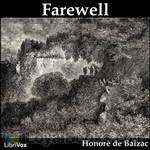 Farewell
Farewell
In his startling and tragic novella Farewell (‘Adieu’), Balzac adds to the 19th century’s literature of the hysterical woman: sequestered, confined in her madness; mute, or eerily chanting in her moated grange. The first Mrs Rochester lurks in the wings; the Lady of Shalott waits for the shadowy reflection of the world outside to shatter her illusion. Freud’s earliest patients will soon enter the waiting-room in their turn. Whilst out hunting two friends come across a strange waif-like woman shut up in a decaying chateau which one of them dubs “the Palace of the Sleeping Beauty”... | |
By: Horace Porter (1837-1921) | |
|---|---|
 Campaigning With Grant
Campaigning With Grant
In the last year of the American Civil War, Horace Porter served as aide-de-camp to General Ulysses S. Grant, then commander of all the armies of the North. This lively 1897 memoir was written from the extensive notes he took during that time. It is highly regarded by later historians. Porter continued in that position with Grant to 1869. From 1869 to 1872 he served Grant as personal secretary in the White House. He was U.S. ambassador to France from 1897-1905. | |
By: Horatio W. Dresser (1866-1954) | |
|---|---|
 World’s Story Volume XV: The World War
World’s Story Volume XV: The World War
This is the last volume of the 15-volume series The World’s Story, originally started by Eva March Tappan. This book, edited by Horatio W. Dresser deals exclusively with the time of the First World War, the events leading up to it, the battles and war engines, the political and diplomatic background endeavours and the cost - human and monetary - of this War. - Summary by Sonia | |
By: International Committee of the Red Cross | |
|---|---|
 Geneva Conventions of 12 August 1949
Geneva Conventions of 12 August 1949
"This Convention represents the fourth updated version of the Geneva Convention on the wounded and sick following those adopted in 1864, 1906 and 1929. It contains 64 articles. These provide protection for the wounded and sick, but also for medical and religious personnel, medical units and medical transports. The Convention also recognizes the distinctive emblems. It has two annexes containing a draft agreement relating to hospital zones and a model identity card for medical and religious personnel." - Summary by International Committee of the Red Cross Please note, this recording DOESN'T include the 3 protocols. | |
By: International Military Tribunal | |
|---|---|
 Trial of the Major War Criminals Before the International Military Tribunal, Nuremberg, 14 November 1945-1 October 1946: Vol. I
Trial of the Major War Criminals Before the International Military Tribunal, Nuremberg, 14 November 1945-1 October 1946: Vol. I
Recognizing the importance of establishing for history an authentic text of the Trial of major German WWII war criminals, the International Military Tribunal, consisting of members from Great Britain, the USA, Russia, and France, directed the publication of the Record of the Trial. This volume contains basic, official, pre-trial documents together with the Tribunal’s judgment and sentence of the defendants. | |
By: J. M. Barrie (1860-1937) | |
|---|---|
 Echoes of the War
Echoes of the War
Short stories with dramatic parts about civilian life in London during the First World War. Some humorous moments. By the author of "Peter Pan". | |
By: J. N. Gregory | |
|---|---|
 Fort Concho; Its Why And Wherefore
Fort Concho; Its Why And Wherefore
Fort Concho was a U.S. Army post in central Texas from 1867 to 1889. It figured considerably in the Indian Wars, notably against the Comanches. It mainly served to protect frontier settlers, stagecoaches, wagon trains, the U.S. mail, and trade routes. This 1957 book, published by the museum at the site of the fort, is the story of its activities. - Summary by David Wales | |
By: J. Walker McSpadden (1874-1960) | |
|---|---|
 Boys' Book of Famous Soldiers
Boys' Book of Famous Soldiers
These 12 stories give a personal portrait of twelve famous soldiers from the past two centuries. Each story explores the early life of the solder —to trace his career up from boyhood through the formative years. Such data serves to explain the great soldier of later years. Summary compiled from the preface of the book. (Summary by philchenevert) | |
By: Jacob Abbott (1803-1879) | |
|---|---|
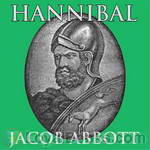 Hannibal
Hannibal
There are certain names which are familiar, as names, to all mankind; and every person who seeks for any degree of mental cultivation, feels desirous of informing himself of the leading outlines of their history, that he may know, in brief, what it was in their characters or their doings which has given them so widely-extended a fame. Consequently, great historical names alone are selected; and it has been the writer's aim to present the prominent and leading traits in their characters, and all the important events in their lives, in a bold and free manner, and yet in the plain and simple language which is so obviously required in works which aim at permanent and practical usefulness... | |
By: James B. Gillett (1856-1937) | |
|---|---|
 Six Years with the Texas Rangers, 1875 to 1881
Six Years with the Texas Rangers, 1875 to 1881
James Gillet recounts his adventures with the Texas Rangers 1856-1937. In a very entertaining style he recounts personal stories of wars, feuds, battles with the Apache nation and pursuing robbers and murderers. From these stories, and others like them, arose the many legends of courage and daring among the Texas Rangers. “The Texas Rangers, as an organization, dates from the spring of 1836. When the Alamo had fallen before the onslaught of the Mexican troops and the frightful massacre had occurred, General Sam Houston organized among the Texan settlers in the territory a troop of 1600 mounted riflemen... | |
By: James Brendan Connolly (1868-1957) | |
|---|---|
 The U-Boat Hunters
The U-Boat Hunters
The author takes the listener on a tour of various ships used in WW1. He discusses the boats and the seamen who occupy them and their encounters with the German U-boats. It is a collection of short stories, each one complete, about them all. The author was also an Olympic athlete; winning a bronze, silver and gold medal in the Athens Olympics of 1896 and a silver in the Paris games of 1900. | |
By: James Driscoll | |
|---|---|
 The Brighton Boys in the Radio Service
The Brighton Boys in the Radio Service
The Brighton Boys in the Radio Service is a boys adventure story set in WWI – Three College Chums join the military and face the perils of spies, submarines and enemy soldiers in the trenches of embattled Europe. An engaging story set in a period where good guys wore white hats, bad guys wore black hats and every chapter ends with a cliffhanger so you have to come back for more! | |
By: James Fenimore Cooper (1789-1851) | |
|---|---|
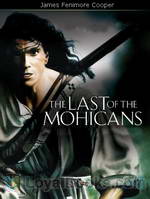 The Last Of The Mohicans
The Last Of The Mohicans
The Last of the Mohicans is an epic novel by James Fenimore Cooper, first published in January 1826. It was one of the most popular English-language novels of its time, and helped establish Cooper as one of the first world-famous American writers.The story takes place in 1757 during the French and Indian War, when France and Great Britain battled for control of the American and Canadian colonies. During this war, the French often allied themselves with Native American tribes in order to gain an advantage over the British, with unpredictable and often tragic results. | |
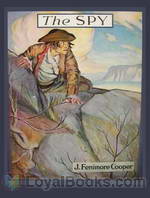 The Spy
The Spy
Between 1865-73 the tumultuous American Revolution rages on in different battlefields. The air is thick with hatred and suspicion as the Continental and British armies clash in bloody warfare. In Westchester County, New York, an area is considered a neutral ground for both forces, Harvey Birch plies his dangerous mission. An innocuous peddler by day, he is in fact an American spy, though he does nothing to correct anyone who assumes he is a British spy. In a magnificent country mansion, The Locusts, live the wealthy Whartons... | |
 The Pathfinder
The Pathfinder
Natty Bumppo goes by many names: La Longue Carabine, Hawk Eye, Leatherstocking, and in this tale, The Pathfinder. Guide, scout, hunter, and when put to it, soldier, he also fills a lot of roles in pre-Revolution upstate New York. An old friend, Sergeant Dunham of the 55th Regiment of Foot, asks him to guide his daughter through the wilderness to the fort at Oswego where Dunham serves. With the French engaging native Indian allies against the British and the Yankee colonists, such a journey is far from safe... | |
 The Deerslayer
The Deerslayer
The Deerslayer, or The First Warpath (1841) was the last of James Fenimore Cooper’s Leatherstocking tales to be written. Its 1740-1745 time period makes it the first installment chronologically and in the lifetime of the hero of the Leatherstocking tales, Natty Bumppo. | |
By: James Ford Rhodes (1848-1927) | |
|---|---|
 History of the Civil War, 1861-1865
History of the Civil War, 1861-1865
Superbly written, this overview of the Civil War, won a Pulitzer Prize in History in 1918. Rhodes covers not only the battles and the generals of the war but gives us a good deal of insight into the politics, economics, international relations and the strategy/thinking of the times. When at times he brings forth an opinion it is clearly stated, so as not to be confused with the facts. Comprehensive and enjoyable, you will find this History of the Civil War both illuminating and captivating. NOTE: Footnotes will not be read but can be found online at https://archive.org/details/historycivilwar01rhodgoog/mode/2up. | |
By: James Grant (1822-1887) | |
|---|---|
 Royal Regiment, and Other Novelettes
Royal Regiment, and Other Novelettes
James Grant was a prolific Scottish writer of novels and "novelettes", particularly centered around military life. Included with this regimental tale, are four such novelettes or short stories. | |